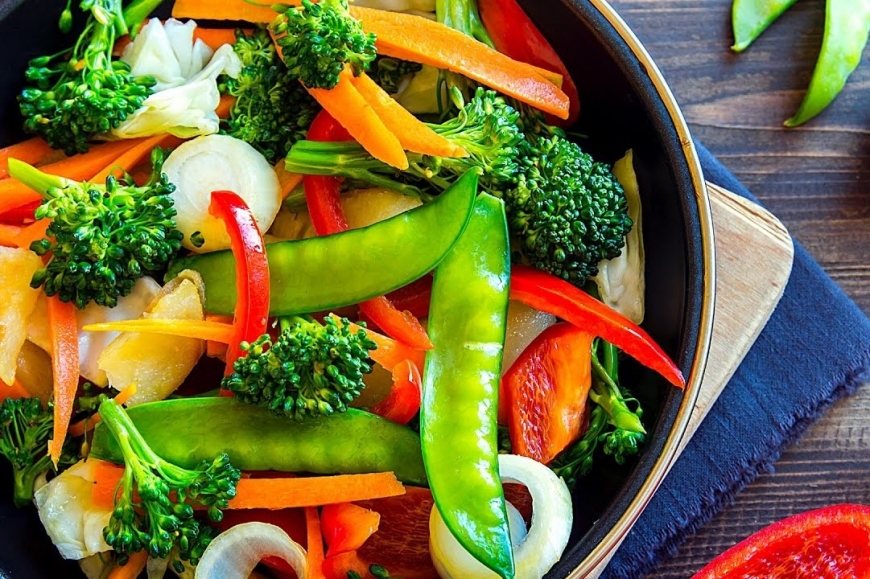Eat Like a Flexitarian & Reap the Benefits of a Vegetarian

WHAT IS A FLEXITARIAN DIET?
It is eating a semi-vegetarian diet with the occasional inclusion of meat.
I think we can all admit that we get in a rut about cooking and meal planning - it takes time to eat healthy. I am hoping to inspire you with some easy ways to implement more plant-based meals into your life to enjoy eating again toward good health. Eating plant-based meals does not mean you have to give up meat or fish entirely. You can eat it less often and add more fruits, vegetables, nuts, seeds, and beans to your diet.
WHAT ARE THE BENEFITS TO EATING LESS MEAT?
“When you base your meals on plant foods, you’re packing your diet with the fiber, vitamins, minerals, and healthy fats that most Americans don’t get enough of.” says Sharon Palmer, R.D.N., editor of Environmental Nutrition. “Plant-based diets are also full of phytochemicals, compounds that help keep many of your body’s systems running smoothly. For instance, the anthocyanins in berries help protect vision; carotenoids in carrots and cantaloupe, and the isothiocyanates in brussel sprouts neutralize the free radicals that can cause cell damage; and flavonoids in apples help control inflammation.” In addition, sweet potatoes contain vitamin C which smooths wrinkles by stimulating collagen.
Eating meat can negatively alter our gut microbiome. A diet full of meat and dairy can cause the body to produce more bile to digest the animal fat. This provides the perfect environment for producing "bad bacteria” in the gut. New research suggests that “bad bacteria” in the gut can speed up plaque formation in the arteries leading toward heart disease. Poor gut health can also cause inflammation. Vegetarians in general consume fewer calories and a have a lower body mass index, another benefit for plant-based eating.
HOW TO MAKE THE SWITCH
- Up your vegetable and fruit intake. Even if you don’t actively cut back on meat at first, add in more produce to each meal or day. I recommend including vegetables at every meal and snack, even breakfast.
- Redesign your plate. Fill at least half your plate with produce, grains, or beans and downsize your meat serving. A stir-fry would be a great way of adding in more veggies.
- When eating meat, don’t overindulge. Choose lean cuts, and avoid oversized portions. A serving of protein should be no more than 3 ounces or about the size of a deck of cards.
TRY SOME OF THESE IDEAS TO GET STARTED
- Quick Stir-Fry - cook an onion in skillet 5 mins, add 1-2 cans of rinsed black beans, teaspoon cumin, ½ teaspoon red pepper, 1 cup of salsa or fresh tomatoes. Stir cook 3 minutes. Add this to any salad, rice, cooked veggies.
- No-Cheese Quesadillas - spread mashed sweet potato on a large tortilla, add onions, peppers, beans to one-half the shell. Fold shell and cook on each side for 2-3 minutes, add any toppings such as salsa, avocado to your meal.
- Zucchini & Carrot Fritters - for breakfast, lunch or dinner. Chop 1 onion, shred one zucchini and 2 carrots. Mix together, add 2 eggs, salt, pepper any other spices you enjoy. Form into small patties, fry up 3-5 minutes on each side. These are so easy and delicious, make extra for left overs.
- Black Bean Quinoa Salad with Mango & Avocado. Check this recipe out at Healthy Seasonal Recipes. This is super easy and delicious with plenty of left overs for lunch and as a side dish.
- Garlic & Herb Roasted Potatoes & Green Beans - try this yummy recipe from The Gracious Wife. I have made this numerous times as a side to a veggie burger.
- Lentil Chili - this recipe from Little Broken is super easy and delicious as we are moving into some cooler fall temperatures next month.
I hope you try one or more of these recipes, give me a shout out on how you enjoyed them or felt more inspired to try going plant-based for at least one meal a week.
Happy Cooking and Eating!!
Lisa Tidman PTA, Health Coach, Yoga Instructor


